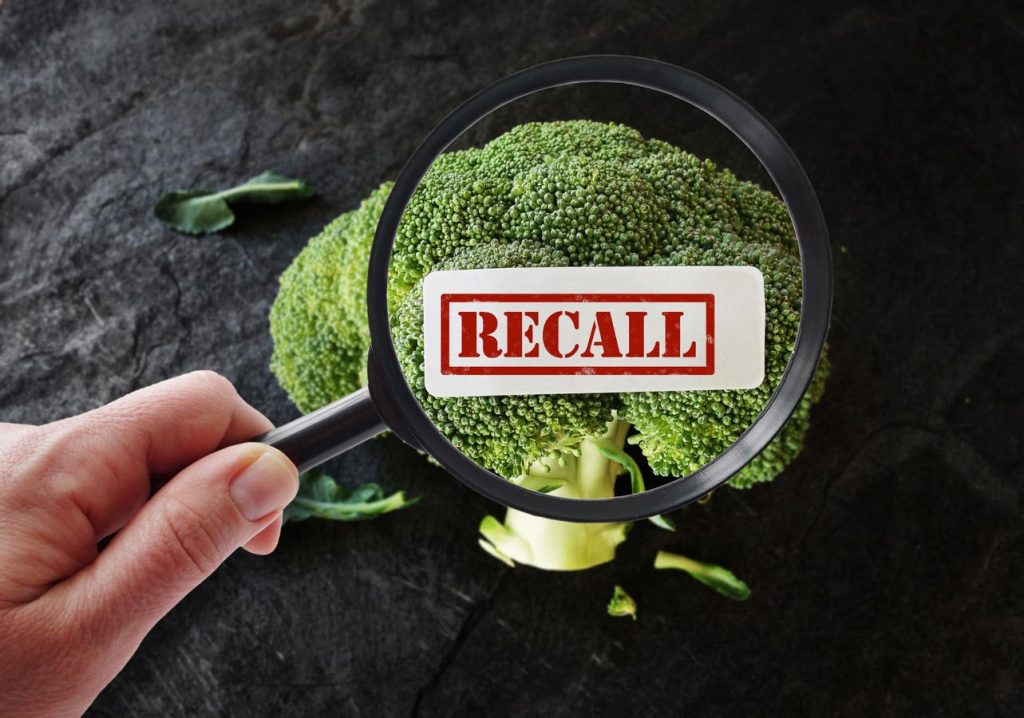Escalating Food Recalls: From Minor Advisories to Public Health Emergencies
Food recalls are a critical aspect of consumer protection, designed to swiftly remove potentially hazardous products from the market. While some recalls address minor labeling discrepancies or quality control issues, others escalate rapidly into major public health crises. Recent incidents involving products ranging from broccoli florets to organic eggs highlight the dynamic nature of food safety and the potential for seemingly minor concerns to transform into life-threatening situations. This article examines the complexities of food recalls, focusing on the factors that trigger upgrades to Class I, the Food and Drug Administration’s (FDA) most serious classification reserved for products posing a severe health risk or even death.
The FDA employs a tiered system to classify recalls, reflecting the level of potential harm associated with the affected products. Class I recalls signify the most imminent danger, indicating a reasonable probability of severe adverse health consequences or death upon consumption. Contamination with pathogens like Listeria or Salmonella, or the presence of undeclared major allergens typically warrants this highest level of alert. Class II recalls address situations where the product may cause temporary or medically reversible issues, such as minor contamination or mislabeling of ingredients without major allergens. Class III recalls denote the lowest risk level, pertaining to products that violate regulations but are not expected to cause health problems, such as minor packaging errors. Significantly, many Class I recalls do not originate at that level. Instead, they often begin as Class II recalls, then escalate as new information emerges, underscoring the evolving nature of food safety investigations.
Several factors can contribute to a recall’s upgrade. Further testing might reveal more widespread contamination than initially suspected, expanding the scope of the recall beyond its initial parameters. Reports of consumer illnesses directly linked to the product solidify the severity of the risk and necessitate prompt action. The discovery of cross-contamination across multiple production batches amplifies the potential impact and urgency of the recall. Finally, if the product’s distribution is found to be more extensive than initially reported, covering a wider geographical area or more retail outlets, the recall will likely be upgraded to reflect the increased consumer exposure.
The case of Walmart’s Marketside Broccoli Florets exemplifies this pattern of escalation. What began as a routine advisory swiftly became a Class I recall upon confirmation of Listeria monocytogenes contamination. The bacteria’s ability to survive refrigeration, coupled with the product’s nature as a raw, ready-to-eat vegetable, significantly elevated the risk, particularly for vulnerable populations such as pregnant women, newborns, and older adults. Similar scenarios have unfolded with other products, including Frito-Lay potato chips recalled due to undeclared milk allergens, posing a life-threatening risk to individuals with dairy allergies. Costco’s Kirkland Signature Organic Pasture-Raised eggs also underwent a recall upgrade due to Salmonella contamination, further emphasizing that even products marketed as "organic" or "premium" are not immune to safety concerns.
These cases demonstrate several crucial aspects of the current food safety landscape. First, food safety is not a static concept; what begins as a minor issue can quickly escalate into a widespread emergency. This underscores the need for vigilance and adaptability in responding to emerging threats. Second, regulatory agencies do not always immediately identify risks. Some recalls are initiated only after consumers report illnesses, highlighting the importance of robust post-market surveillance and consumer reporting mechanisms. Third, as the Costco egg and Frito-Lay chip recalls demonstrate, even products perceived as healthier or higher-quality can be subject to contamination, underscoring the pervasiveness of food safety risks.
Beyond these specific examples, other recalls further illustrate the complexities of food safety and the reasons behind recall upgrades. The Wicklow Gold Cheddar Tomato & Herb recall, prompted by Listeria contamination, signifies the persistent threat posed by this pathogen, especially in soft cheeses. This recall, like others, underscores the need for stringent quality control measures throughout the production and distribution chain. Similarly, the Cal Yee Farm Snacks recall, initially issued for undeclared allergens in various products and later expanded to include dark chocolate-covered nuts and apricots, emphasizes the critical importance of accurate labeling and allergen management. Undeclared allergens are a leading cause of Class I recalls, as even trace amounts can trigger severe, life-threatening reactions in sensitive individuals. This recall, upgraded to Class I due to the severity of the potential health risk, highlights the need for manufacturers to diligently monitor and control allergen cross-contamination.
The frequency and severity of these escalating recalls underscore the need for continuous improvement in food safety practices. While the FDA plays a crucial role in regulating and monitoring the food supply, consumers also bear responsibility for staying informed and taking proactive steps to protect themselves. Checking for recall notices, understanding proper food handling and storage practices, and reporting any suspected foodborne illnesses are essential actions for consumers to contribute to a safer food system. Furthermore, advocating for stricter food safety regulations and supporting initiatives that promote transparency and accountability within the food industry are crucial steps towards minimizing risks and ensuring consumer protection.
The trend of recalls starting small and then escalating highlights the dynamic and often unpredictable nature of food safety concerns. This pattern emphasizes the need for continuous monitoring, effective communication channels between regulators, manufacturers, and consumers, and a proactive approach to addressing potential hazards. The ultimate goal is to create a more resilient and safer food system that minimizes the occurrence and impact of foodborne illnesses. While recalls are a necessary safety net, preventing contamination and ensuring the integrity of the food supply from farm to table should be the paramount objective. This requires ongoing collaboration among all stakeholders, including government agencies, food producers, retailers, and consumers, to foster a culture of food safety and protect public health.


